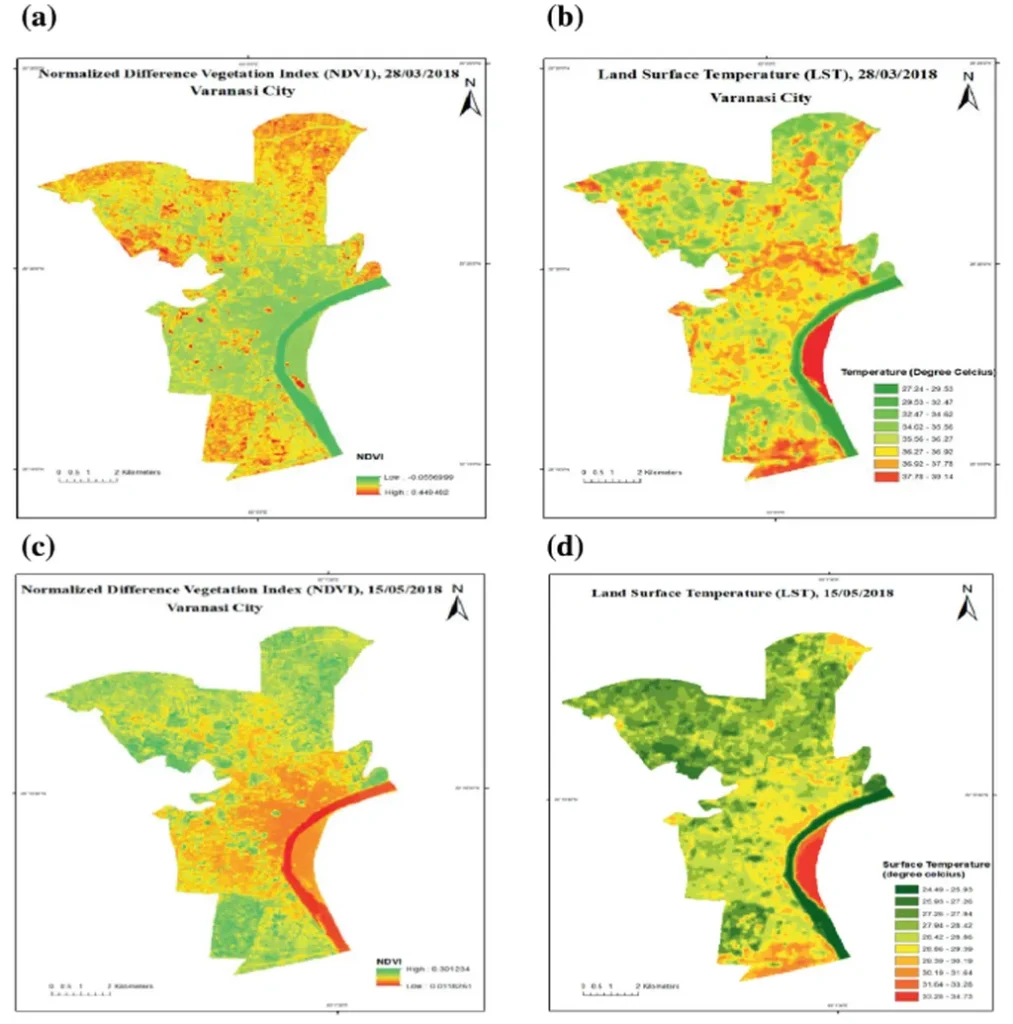In the heart of India, the ancient city of Varanasi is undergoing rapid urbanization, a transformation that has significant implications for its thermal environment. A recent study published in *Discover Cities* (which translates to “Explore Cities”) has shed light on the intricate relationship between land surface temperature (LST) and land use changes in this historic city. Led by Niharika Tiwari from the Department of Geography at Banaras Hindu University, the research offers valuable insights for urban planners, policymakers, and the energy sector.
Varanasi, like many cities in developing countries, has witnessed substantial urban growth over the past few decades. This expansion has altered the city’s landscape, affecting its thermal dynamics. Tiwari’s study investigates the seasonal variations in LST and its correlation with key spectral land use indices—Normalized Difference Vegetation Index (NDVI), Normalized Difference Built-up Index (NDBI), and Normalized Difference Water Index (NDWI).
The research utilized thermal and multispectral bands from Landsat datasets to retrieve LST and calculate the spectral indices. The findings reveal a complex pattern of temperature changes. Between 1993 and 2009, LST in Varanasi initially increased, but from 2009 to 2023, a decline was observed. For instance, the mean summer LST rose from 32.47°C to 34.43°C during 1993–2003 but dropped to 30.34°C in the subsequent period. Similarly, winter LST increased from 17.66°C to 20.01°C between 1993 and 2009 but decreased to 18.54°C from 2009 to 2023.
Tiwari emphasizes the significance of these findings: “The dynamics of built-up areas, vegetation cover, and soil moisture, as reflected in the spectral land use indices, play a critical role in modulating LST. Understanding these relationships is crucial for sustainable urban planning and managing the urban thermal environment.”
The study’s correlation analysis highlights a significant but varying relationship between the spectral indices and LST. This information is invaluable for urban planners and policymakers aiming to implement strategies that mitigate the urban heat island effect and promote sustainable development.
For the energy sector, these insights are particularly relevant. As cities expand, the demand for energy increases, particularly for cooling purposes. By understanding how land use changes affect LST, energy providers can better anticipate demand and develop more efficient and sustainable energy solutions. Tiwari’s research underscores the importance of integrating environmental considerations into urban planning and energy management strategies.
As Varanasi continues to evolve, the findings from this study will be instrumental in shaping policies that balance urban growth with environmental sustainability. The research not only provides a comprehensive assessment of LST variations but also offers a framework for future studies in similar urban contexts. By leveraging these insights, stakeholders can work towards creating more resilient and sustainable cities.
Published in *Discover Cities*, this study serves as a reminder of the intricate interplay between urbanization and environmental dynamics. As Tiwari concludes, “The findings may help policymakers, government bodies, and urban planners in implementing appropriate solutions for sustainable urban planning and maintaining the urban thermal environment.”

